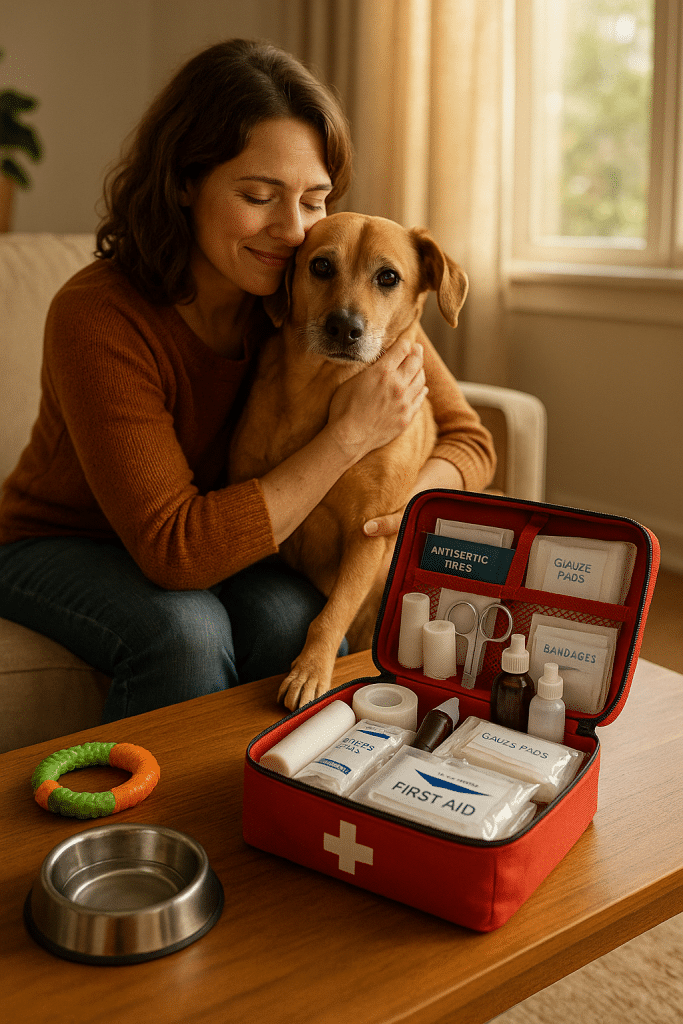When it comes to caring for our furry friends, being prepared for emergencies is crucial. Accidents can happen anytime—whether at home, on a hike, or during travel—and having a reliable pet first aid kit can make all the difference in keeping your pet safe and healthy. In this comprehensive guide, I’ll walk you through the essential items every pet first aid kit should contain, helping you confidently respond to common emergencies until professional veterinary care is available. Along the way, I’ll also share tips on choosing the right kit, maintaining it, and even spotlight some of the best veterinary-approved kits on the market today.
Whether you’re a new pet owner seeking a detailed pet first aid kit checklist or an experienced caregiver wanting to upgrade your emergency supplies, this article has you covered. From bandages to CPR masks, from handling allergic reactions to navigating travel safety, I’ll lay out everything you need to know to create a life-saving resource for your beloved companion.
Understanding the Importance of a Pet First Aid Kit
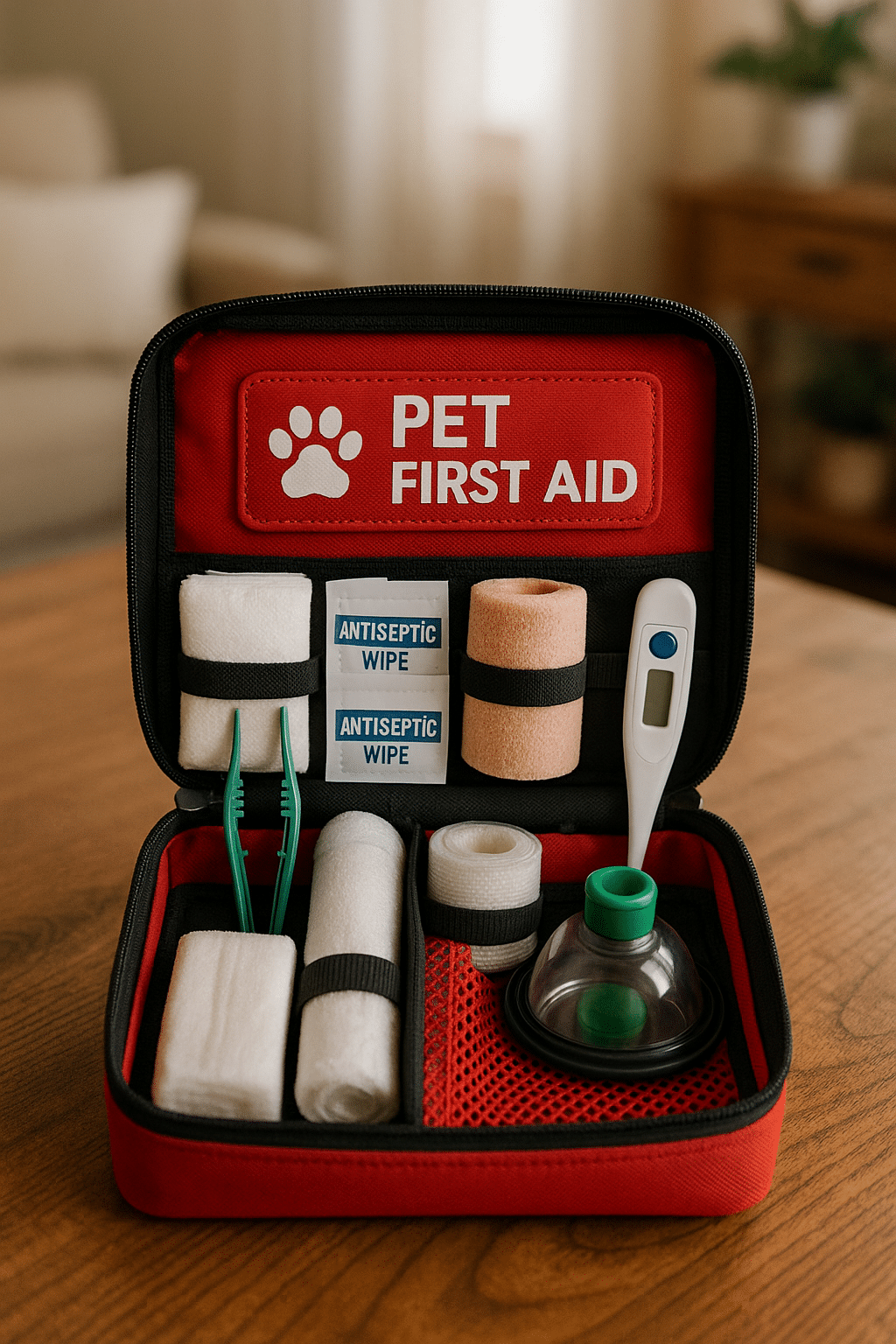
Why Every Pet Owner Needs a Pet First Aid Kit
Pets are family members, and like any family member, they can get hurt unexpectedly. But unlike humans, our pets can’t tell us exactly what’s wrong—their pain often goes unspoken. That’s why having a dedicated pet first aid kit is not just useful but essential. Accidental cuts from a garden thorn, insect bites, sudden allergic reactions, or even heatstroke during summer walks can escalate quickly without prompt care.
From my experience working with pet owners and veterinarians, I’ve seen countless cases where timely application of first aid made a huge difference. For example, a simple bandage to stop bleeding or a cold compress to reduce swelling can stabilize an injury and reduce the risk of infection or shock. Moreover, a pet first aid kit increases your preparedness for outdoor adventures, travel, or unexpected delays in getting to a vet.
How a Well-Equipped Kit Can Save Your Pet’s Life
Imagine you’re hiking with your dog, and suddenly they get a deep scrape from a sharp rock. Panicking is natural, yet if you have a pet first aid kit handy, you can clean the wound, apply antiseptic ointment, and bandage it quickly to prevent infection. This initial care can prevent complications and make the vet’s job easier.
Studies and veterinary experts emphasize that immediate first aid reduces the chances of complications from injuries, poisoning, or allergic reactions. Additionally, first aid skills like knowing how to perform CPR or stabilize fractures empower you to act confidently in emergencies. Indeed, a well-stocked kit together with the right knowledge can literally save your pet’s life until you reach professional help.
What to Include in Your Pet First Aid Kit: The 7 Essential Items
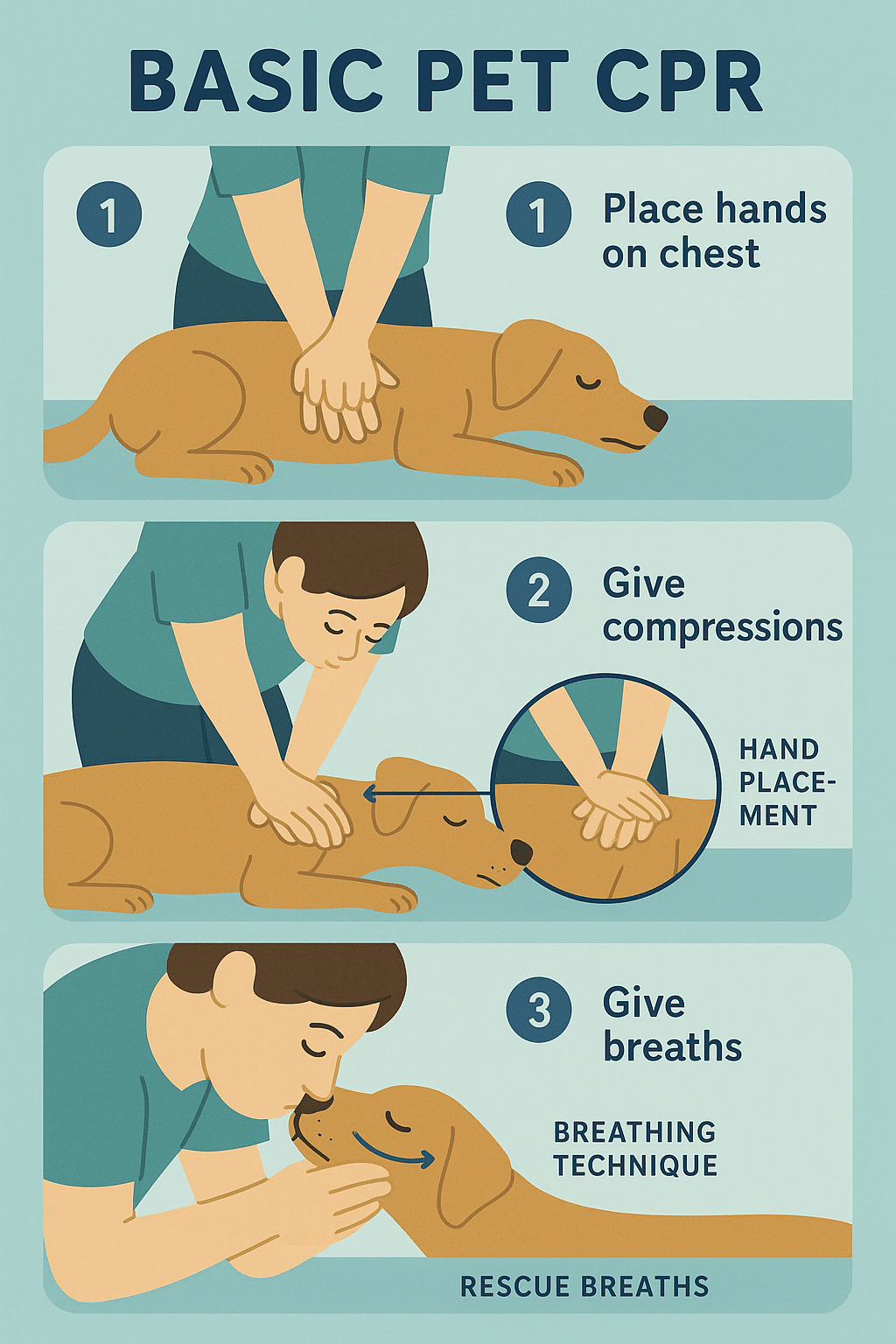
Let’s dive into the heart of the matter—what exactly should be in your pet first aid kit? I’ve distilled the must-haves into seven essential categories, each explained in detail with context and examples.
1. Bandages and Gauze for Wound Protection and Control
Proper wound care is the cornerstone of pet first aid. Bandages and gauze not only protect open wounds from dirt and bacteria but also help to control bleeding, reducing the risk of infection and further injury.
- Types to Include:
- Sterile gauze pads (various sizes) for dressing wounds
- Non-stick pads to prevent pulling on fur
- Adhesive bandages and rolls of conforming gauze to secure dressings
-
Elastic bandages for support and pressure application
-
Real-Life Tip:
Dogs and cats often try to lick or scratch wounds. Using an appropriate snug bandage or an Elizabethan collar can prevent them from reopening the injury. -
Top Kit Example:
The CritterCare Basic Pet First Aid Kit includes a variety of bandages and gauze pads carefully chosen to cover a range of injuries, making it ideal for most dogs, cats, and small animals. Its resealable pouch keeps these supplies dry and ready. (CritterCare Kit)
2. Antiseptic and Topical Ointments for Infection Prevention
Cleaning wounds thoroughly and applying antiseptic ointments are vital steps to stop infections before they start.
- Recommended Supplies:
- Antiseptic wipes or solutions safe for pets (e.g., chlorhexidine)
- Antibiotic ointments (like Neosporin formulated for pets)
-
Iodine or disinfectant swabs for deeper cleaning
-
Why This Matters:
Pets’ wounds can harbor bacteria that quickly turn minor cuts into dangerous infections. Using human antiseptics like hydrogen peroxide can sometimes harm pet tissue, so veterinarian-approved products are preferable. -
Kit Highlight:
The Deluxe Pet First Aid Kit for Dogs and Cats includes packets of iodine disinfectant and isopropyl alcohol wipes approved for veterinary use, ensuring you have the right antiseptic treatments on hand. (Deluxe Vet Kit)
3. Tools for Assessment and Treatment (Thermometer, Tweezers, Scissors)
Having the right tools makes assessment and initial treatment far more effective and safer.
- Must-Have Instruments:
- Digital pet thermometer with a flexible tip for accurate temperature checks
- Tweezers for removing ticks, splinters, or foreign objects safely
- Bandage scissors (blunt tip) to cut gauze or tape without injury
-
Forceps for handling small items or wounds
-
Using Them Correctly:
When checking your pet’s temperature rectally, ensure your pet is calm, and lubricate the thermometer gently. For tick removal, grasp the tick as close to the skin as possible with tweezers and pull steadily without twisting. -
Example Kit:
The Pet Emergency Academy 60+ pc Deluxe Custom Pet First Aid Kit offers stainless steel bandage scissors, forceps, and a pet thermometer designed specifically for animals, equipping you well for hands-on care. (Pet Emergency Academy)
4. Medications and Allergy Supplies (Antihistamines, Diphenhydramine Packets)
Allergic reactions and minor ailments are common in pets, and being prepared with approved medications is a lifesaver.
- Key Medications:
- Antihistamine packets like diphenhydramine (Benadryl) for allergic reactions, bites, or stings
- Hydrogen peroxide (3%) to induce vomiting after vet consultation if poisoning is suspected (only use under guidance)
-
Sterile saline for eye flushing or wound irrigation
-
Important Caution:
Never give human medications to pets without veterinary advice as dosages and safety vary by species and size. -
Kit Recommendation:
The My Medic Pet Medic Dog First Aid Kit includes diphenhydramine packets, making it suitable for managing allergic reactions on the go. (My Medic Kit)
5. Emergency Stabilization Supplies (Splints, Adhesive Tape, Thermal Blankets)
Injuries involving fractures or shock need immediate stabilization to prevent worsening before veterinary care.
- Items to Carry:
- Splints to immobilize broken or injured limbs
- Medical adhesive tape to secure bandages and splints
- Thermal blankets to maintain body temperature during shock or hypothermia
-
Cold packs (instant or reusable) to reduce swelling
-
Why It’s Critical:
Keeping a fractured limb still prevents extra pain and tissue damage. Shock from blood loss or trauma can drop a pet’s internal temperature dangerously low, so thermal blankets help maintain warmth. -
Kit Spotlight:
The DAVEMED 170-Pieces Cat & Dog Emergency Kit includes splints, adhesive tape, emergency blankets, and ice packs for comprehensive stabilization care. (DAVEMED Kit)
6. Protective Gear and Barriers (Disposable Gloves, CPR Masks)
Maintaining hygiene protects you and your pet while you administer care.
- Essentials:
- Disposable nitrile gloves to prevent contamination and protect wounds
- Pet-specific CPR barrier masks to safely perform resuscitation if required
-
Face masks and sanitizing wipes for you, especially in multi-pet or outdoor settings
-
Insight:
Wearing gloves also helps avoid cross-contamination when handling bites, wounds, or animal fluids. -
Example Product:
The Deluxe Pet First Aid Kit for Dogs and Cats supplies disposable gloves and a CPR barrier mask designed for pet emergencies to give you safe hands-on capability. (Deluxe Vet Kit)
7. Reference Materials and Instructions (Pet First Aid Guide)
Knowledge is power. A clear, vet-approved first aid manual is invaluable when panic hits.
- Included Materials:
- A simple printed guide with step-by-step instructions for common emergencies
- Photos or diagrams showing bandaging, CPR, choking, and poisoning protocols
-
Emergency numbers and resources for quick call-up
-
Why It Helps:
Stressful emergencies cloud judgment; having a handy guide reinforces correct procedures and calming strategies, improving outcomes significantly. -
Recommendation:
Kits like the CritterCare Basic Pet First Aid Kit and the SURVIVAL Pet First Aid Kit include comprehensive first aid tip guides vetted by experts to help you act swiftly. (SURVIVAL Kit)
How to Choose the Right Pet First Aid Kit for Your Needs
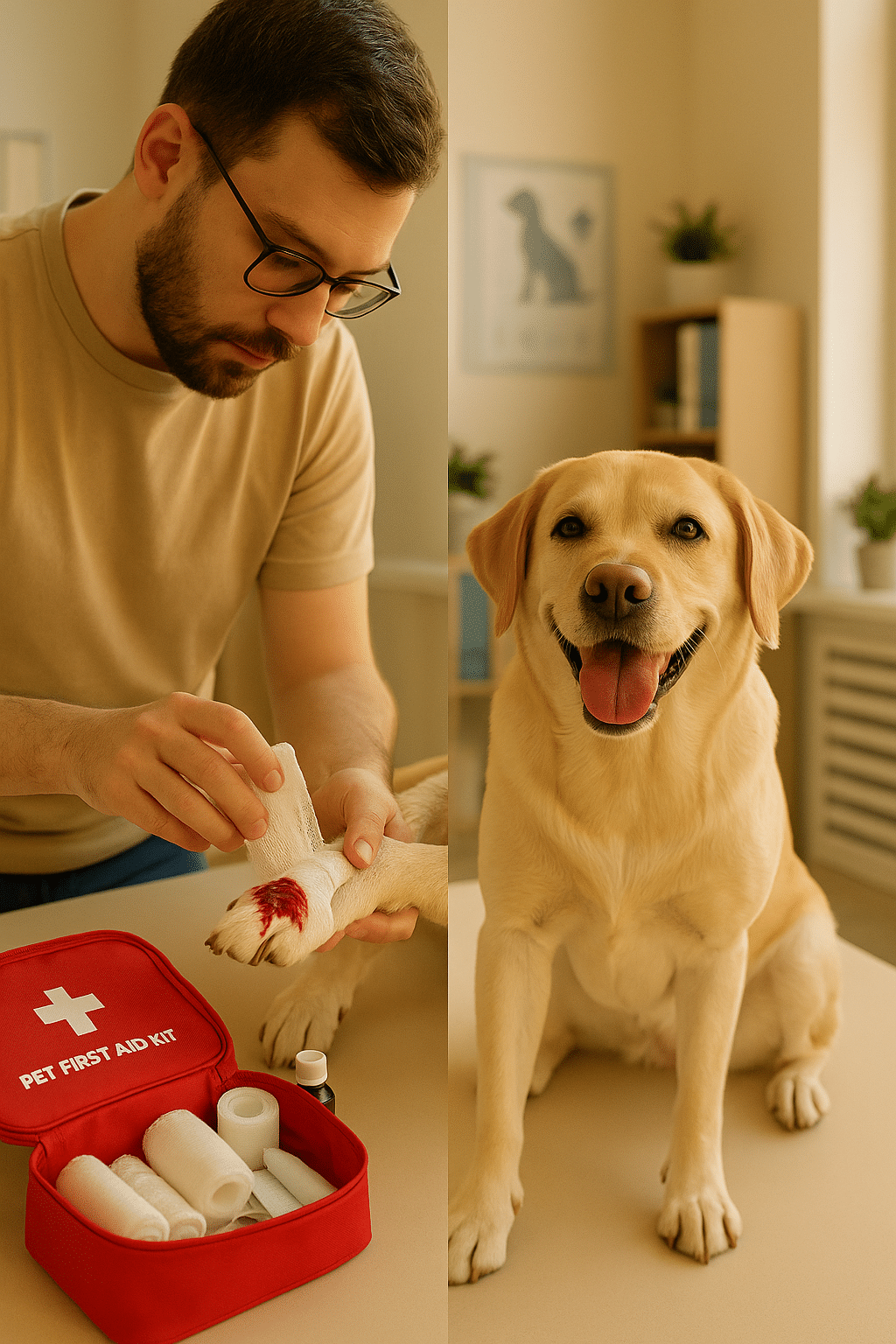
Comparing Popular Kits: CritterCare, Dive 1st Aid, and My Medic
Choosing the right kit depends on your lifestyle, the type of pet you have, and your budget. Let’s compare:
Features and Benefits of CritterCare Basic Pet First Aid Kit
CritterCare’s kit is rugged and versatile, with a water-resistant pouch perfect for outdoor adventures. It includes wound care supplies and life-threat management items developed by vets and military dog care experts. Its lifetime warranty speaks to reliability. Ideal for pet owners who want a durable, all-purpose kit. (CritterCare)
Customization Options in Dive 1st Aid Pet First Aid Kit
Dive 1st Aid offers a compact and customizable kit. You can add medications specific to your pet’s health conditions, which is excellent for pets with allergies or chronic issues. At $29.95, it’s affordable and travel-friendly for those frequently on the move. (Dive 1st Aid)
Portability and Essentials in My Medic Pet Medic Dog First Aid Kit
This kit’s small size makes it a perfect everyday carry solution for hikes or quick outings. Despite its compactness, it includes critical items like antihistamines and a pet first aid guide. It’s also HSA/FSA approved and comes with a lifetime guarantee, providing peace of mind for urban or active pet owners. (My Medic)
Comprehensive vs. Compact Kits: When to Choose Which
-
Comprehensive Kits: Offer 60+ to 170 items, covering a wide range of emergencies. Best if you engage in varied outdoor activities or have multiple pets. (e.g., DAVEMED Kit, Pet Emergency Academy Deluxe Kit)
-
Compact Kits: Focus on basics and portability, perfect for day trips and urban environments where veterinary help is accessible quickly.
Your choice should balance preparedness with practicality—too bulky and you might not carry it; too minimal and you risk missing vital supplies.
Advanced Pet First Aid Kits for Specialized Needs
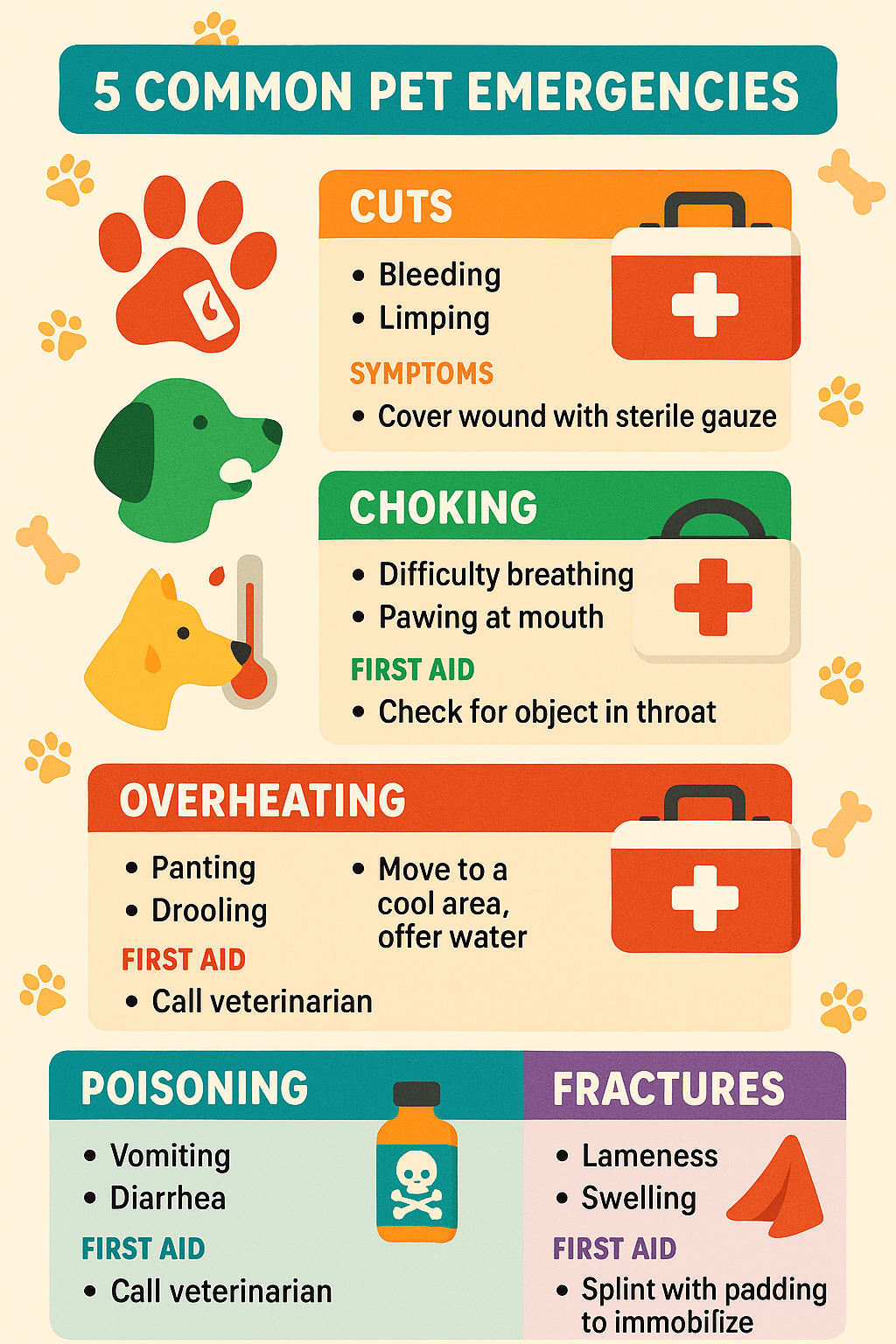
If you want to go the extra mile, several veterinarian-approved advanced kits can equip you beyond the basics.
Pet Emergency Academy’s 60+ pc Deluxe Custom Kit
This kit goes beyond basics with items like a blood clotting stick, CPR barrier mask, emergency whistle, and collapsible water bowl. Its waterproof, floating case suits boating or water sports with pets. Price point near $60 makes it reasonable for comprehensive home and travel use. (Pet Emergency Academy)
DAVEMED 170-Pieces Cat & Dog Emergency Kit
With 170 pieces, this is a fully loaded treasure for pet owners who want maximum preparation, especially for those with multiple pets or outdoor lifestyles. The inclusion of emergency collars and blankets supports a wide range of first aid and survival needs. (DAVEMED)
Deluxe Pet First Aid Kit (Veterinarian Approved)
This kit combines portability with a broad inventory, all veterinarian tested and recommended. It’s geared for pet owners wanting trusted quality with the convenience of a well-organized, durable case. (Deluxe Vet Kit)
SURVIVAL Pet First Aid Kit: Outdoor and Multi-Purpose Use
Designed for adventurers, this kit features over 85 items, including snakebite bandages, emergency whistles, and eco-friendly accessories. It offers dual-use items for pets and humans and features hands-free straps that make treating pets easier while outdoors. (SURVIVAL Kit)
Essential First Aid Techniques Every Pet Owner Should Know

Administering CPR and Resuscitation
Knowing how to perform CPR on pets can be a game-changer during cardiac or respiratory arrest. The general technique involves chest compressions and rescue breaths synchronized carefully. Pet shock collars and CPR masks included in deluxe kits aid safety and effectiveness. Training courses from organizations like the American Red Cross are highly recommended.
Bandaging Techniques and Injury Stabilization
Properly wrapping a bandage without cutting circulation takes practice. Always wrap snugly but not too tightly, and use splints to immobilize suspected fractures. Pets need calming and sometimes muzzle application during bandaging to prevent bites.
Managing Poisoning, Allergic Reactions, and Seizures
- For poisoning: Quickly identify the toxin, call your vet or poison control, and induce vomiting only if instructed by professionals.
- Allergic reactions: Administer antihistamines promptly; watch for swelling or breathing difficulty.
- Seizure care: Clear the pet’s surroundings to prevent injury, and monitor seizure duration; seek emergency vet care if prolonged.
Treating Heatstroke, Shock, and Choking
- Heatstroke: Move pet to shade, cool with damp towels, provide water but avoid ice-cold water directly.
- Shock: Cover with thermal blankets and keep calm.
- Choking: Heimlich maneuver adapted for pets can dislodge airway obstructions; seek help if unsure.
How to Maintain and Update Your Pet First Aid Kit Regularly
Checking Expiry Dates and Replacing Supplies
Medicine and antiseptic items lose potency over time. Make a habit of inspecting the kit every few months, removing expired or used items, and replenishing them promptly to keep your kit ready for action.
Customizing the Kit Based on Your Pet’s Health Needs
If your pet has specific health issues, like allergies or chronic conditions, add necessary medications or equipment (e.g., inhalers, specialized ointments) to personalize the kit.
Storing Your Kit for Quick and Easy Access
Keep the kit in a known, accessible place at home and consider having portable versions for travel or outdoor use. Waterproof bags or cases extend the life of supplies, especially in humid or wet environments.
Integrating Your Pet First Aid Kit into Your Travel and Outdoor Safety Gear
Portable and Waterproof Kits for Hiking and Camping
Outdoor adventures increase injury risks. Kits like the CritterCare Basic Pet First Aid Kit and SURVIVAL Pet First Aid Kit are perfect for their water-resistant pouches and durable supplies designed for rough conditions.
Essential Travel Tips to Keep Your Pet Safe
Alongside your kit, carry your pet’s medical records, a list of emergency vets nearby, and ensure your pet’s ID tags and microchip information are current. Hydration, shaded breaks, and safe leashes complete your travel-first-aid safety strategy.
Local Veterinary Emergency Services and When to Seek Professional Help
Recognizing When Immediate Vet Care Is Necessary
Not all injuries are treatable at home. Deep wounds, persistent bleeding, difficulty breathing, severe pain, or altered consciousness require urgent veterinary intervention. Your pet first aid kit is a bridge to professional care, not a substitute.
How Your First Aid Kit Supports Veterinary Treatment
Proper first aid can stabilize your pet, reduce pain, and limit infections, making veterinary treatments more effective and straightforward when you arrive at the clinic.
Unique Insight: The Role of Technology in Pet First Aid
Using Mobile Apps to Guide First Aid Procedures
Apps like the American Red Cross Pet First Aid app offer step-by-step guidance in emergencies. These resources complement physical kits by providing visual aids and vital tips on-the-spot.
Smart Sensors and Wearables for Early Injury Detection
Modern pet wearables monitor vital signs, detecting early signs of distress, heatstroke, or seizures, alerting owners to act quickly even before visible symptoms appear.
Future Trends: Integrating AI and Remote Vet Consultations with First Aid Kits
Emerging technologies will enable instant virtual vet consultations via mobile devices, bridging the gap between your first aid efforts and professional guidance, enhancing pet emergency care.
FAQs
Q1: What is the best pet first aid kit for dogs and cats?
The best pet first aid kit depends on your lifestyle and pet. CritterCare Basic Pet First Aid Kit offers excellent all-around supplies with a water-resistant pouch, while DAVEMED’s 170-piece kit is best for comprehensive preparedness. Kits like My Medic’s are great if portability is a priority.
Q2: What should I include in a pet first aid kit for emergencies and travel?
Include bandages, antiseptic wipes, pet-safe ointments, a digital thermometer, antihistamines, tweezers, disposable gloves, splints, and a pet first aid manual. Consider waterproof and compact kits like SURVIVAL or Dive 1st Aid for travel.
Q3: How do I maintain and update my pet first aid kit regularly?
Check expiration dates every few months, replace used or expired supplies, and customize the kit if your pet develops new health needs. Store the kit in an accessible, dry place.
Q4: Can a pet first aid kit help with poisoning and allergic reactions?
Yes, many kits include antihistamines for allergic reactions and instructions on managing poisoning. However, always seek veterinary help immediately if your pet ingests toxins or shows severe allergic symptoms.
Q5: How do I perform basic first aid if my pet is choking or having a seizure?
For choking, try the pet Heimlich maneuver or remove visible obstruction carefully. For seizures, remove hazards around your pet, keep calm, and time the seizure duration. Call a vet if the seizure lasts longer than 5 minutes or repeats frequently.
Quick Takeaways / Key Points
- A pet first aid kit is essential for prompt injury care, especially when veterinary help isn’t immediately reachable.
- Seven core items every kit needs: bandages, antiseptics, treatment tools, medications, stabilization supplies, protective gear, and first aid guides.
- Choose kits based on your pet’s size, health needs, and your lifestyle activities—compact for travel, comprehensive for outdoor adventuring.
- Regularly inspect kits for expired items and customize them as your pet’s health changes.
- Learn and practice basic first aid techniques like CPR, bandaging, and poisoning response to effectively use your kit.
- Integrate your pet first aid kit into your travel and outdoor safety gear for peace of mind.
- Stay informed about veterinary emergency services and technology advancements that support pet first aid.
Conclusion
Taking the step to assemble or purchase a quality pet first aid kit is an act of love and responsibility toward your pet’s wellbeing. From treating minor scrapes at home to stabilizing injuries on outdoor adventures, these kits equip you with the means to act decisively and compassionately in emergencies. As pet owners, we never want to feel helpless, and having a well-stocked, veterinarian-approved kit empowers us to be proactive guardians.
I encourage you to evaluate your current pet care setup, choose a kit that fits your needs—be it CritterCare’s rugged build, My Medic’s portable convenience, or DAVEMED’s comprehensive inventory—and commit to keeping it updated and accessible. Remember, a pet first aid kit is only as good as the knowledge to use it, so consider taking a pet first aid course and download trusty apps for guidance.
Your pet depends on you. Let’s make sure you’re ready to protect those wagging tails and gentle purrs with confidence and care every day.
For detailed kit options and to learn more, visit the official product pages linked throughout this article and ensure your pet’s safety journey starts today.

